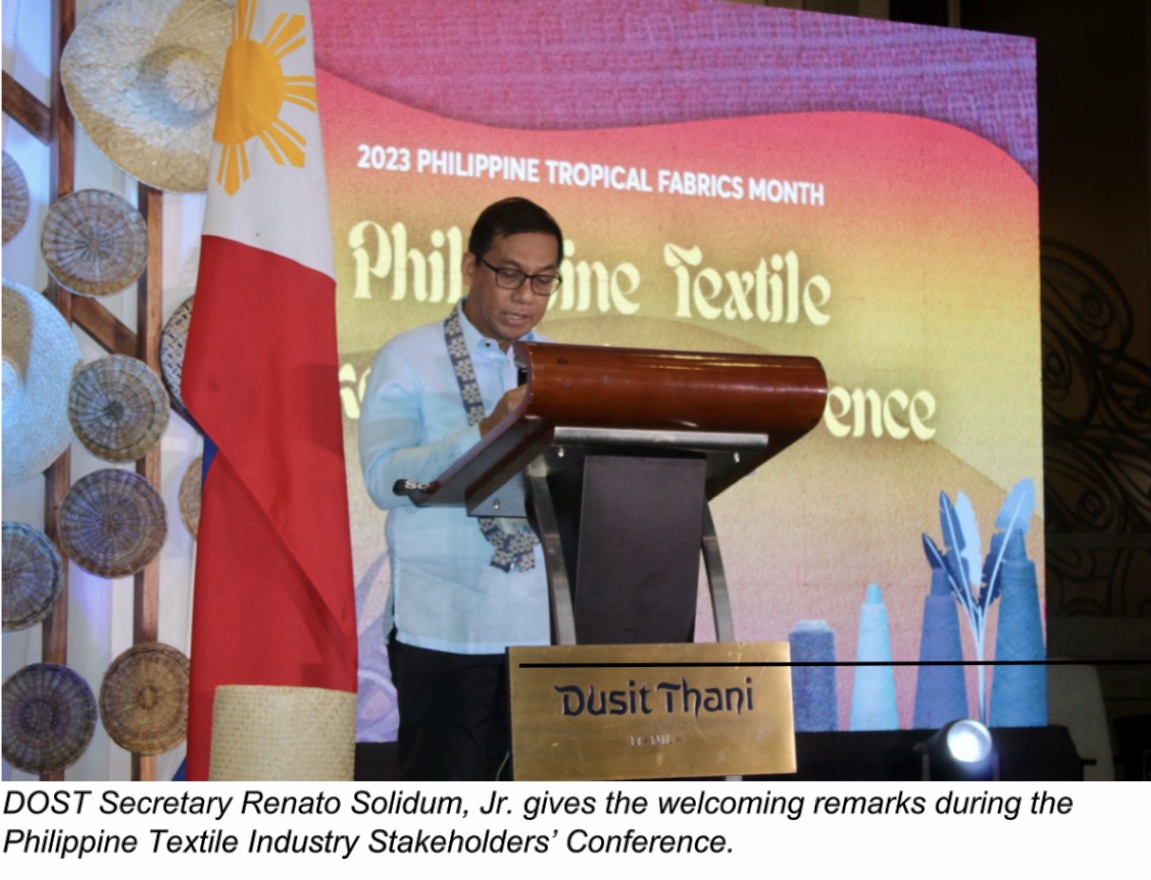The Department of Science and Technology (DOST) showcased Philippine Tropical Fabrics (PTF) during the Philippine Textile Industry Stakeholders’ Conference at the Dusit Thani Hotel, Makati City. Fashion and innovation blended perfectly during the fashion presentation of Filipino-made products with textile fibers from pineapple leaf, abaca, banana, and Philippine silk, designed for government officials and employees’ uniforms.
“Innovation powers the future of the textile industry” said DOST Secretary Renato Solidum, Jr. “We hope to continuously empower our farmers, community weavers and small businesses who are an integral part of the value chain through S&T programs and projects. The blended textiles made from locally sourced fibers is an illustration on the ability of science to contribute to national economic progress.”
The Philippine Textile Research Institute (PTRI) of the DOST is tasked to create and innovate textiles and auxiliaries in support of the industry. Hinged on the requirement of Republic Act 9242, the Institute has developed yarns and textiles in its PTF v1 way back in 2005. These are yarns containing at least 20% pineapple, banana or abaca fibers in blend with polyester, woven in the mill with polyester warp, effectively meeting the 5% by weight minimum natural textile fiber requirement in the fabric stage.
Another significant textile technology is the development of Philippine Silk. DOST invested in a Silk Research and Innovation Hub in Misamis Oriental. To keep Philippine silk cost competitive, DOST developed a process to generate seven (7) kg of raw silk per day, requiring 15 hectares of mulberry farm providing additional income of P 16,000 per month to almost 60 families with at least 1/8-hectare farm.
Also, the Silk Innovation Hub in Kalinga serves the silk production in Cordillera and in 2023 two more will be launched-one in Aklan and one in Negros Occidental.
DOST also sustained a genomic project to maintain the productivity and vigor of the largest silkworm germplasm in the Philippines. Through these efforts, natural textiles have expanded from wearable items to nonwoven applications for filtration and automotive, bags and footwear through drylaid textiles under our nonwoven textiles R&D.
Developing natural dyes is another important component in textile transformations. DOST focuses on this to prevent toxic byproducts in the processing of textile and the income opportunities given to local farmers and manufacturers.
Through DOST investments, the Natural Dyes Center that serves as the core facility for natural dyes R&D and product development, is able to link eleven (11) NatDyes Hubs all over the Philippines. DOST aims to add three (3) more NatDyes hubs this year. A large-scale indigo dyeing machine is already also working in DOST-PTRI.
The event brought together stakeholders from the industry, government and academe and highlights the significant role of collaborations in enabling innovation-led and creative studies for textile-garment and allied industries. The conference also featured an exhibit of design creations from Filipino artisans. (DOST/STII)

